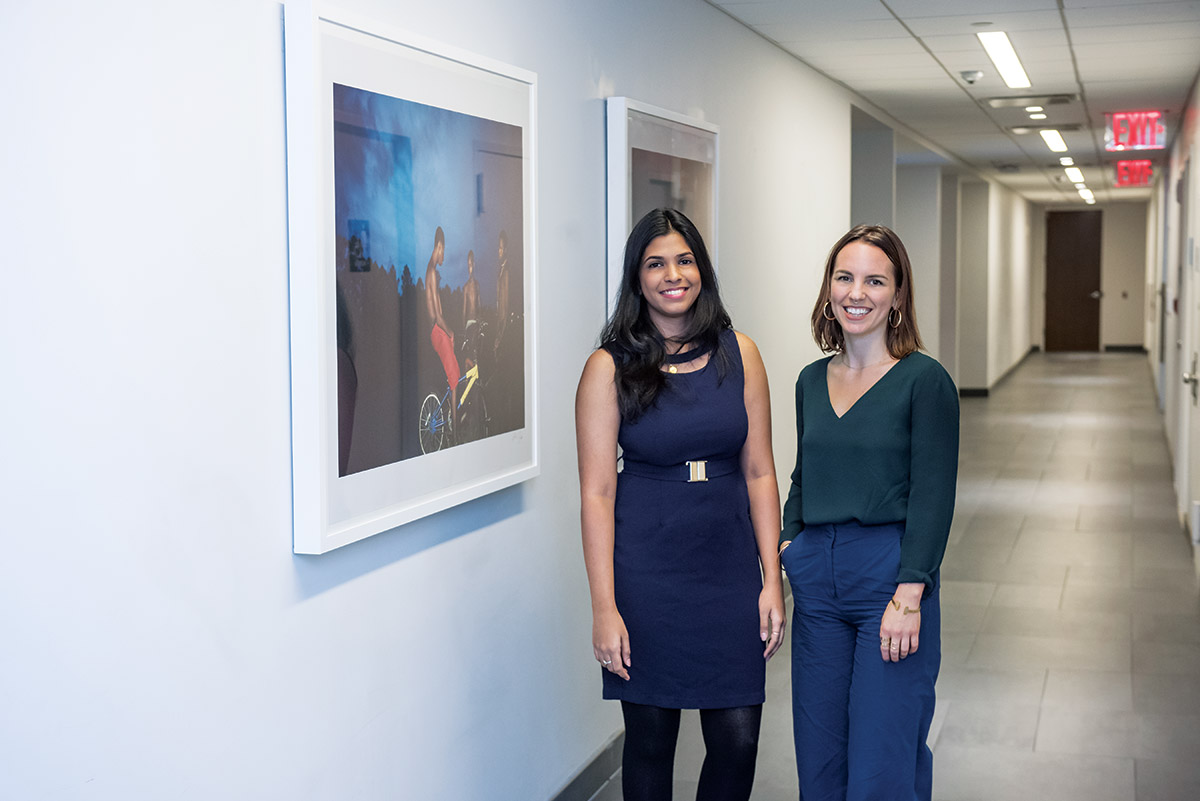
Hurricanes Irma and Maria devastated the island of Puerto Rico in 2017, leaving roughly two-thirds of the population without electricity and roughly one-third of the population without clean water. Cities such as San Juan and Ponce have seen significant recovery since, thanks to federal funds and international attention, but residents in many rural areas are still living with the damage caused by the consecutive storms.
As part of a commitment by New York State to assist in recovery efforts in the wake of Hurricanes Irma and Maria, approximately 250 CUNY students traveled to Puerto Rico via the CUNY Service Corps Puerto Rico program to help repair and weatherize damaged homes in the towns of Barranquitas, Loíza, Toa Baja, Orocovis, Santurce and Río Grande.
CUNY SPH students and faculty, including Associate Dean for Research Michele Kiely and MPH candidates Noelle Fries and Tejasvi Kallam, were deployed for two weeks over the summer to work with nonprofits engaged in helping rebuild the devastated country.
Volunteers worked with one of three organizations—Nechama, Heart 9/11 and All Hands and Hearts—currently providing disaster relief on the island. Volunteers were assigned teams and work sites, and were dealt new work assignments each day, including installing corrugated galvanized iron (CGI) panels on the roofs of the families’ homes to protect them from future weather events. Students like Fries relished the opportunity to get their hands dirty on the jobsites.
“Physical labor, especially carpentry, has always been an incredible reprieve for me creatively and viscerally,” Fries said. “It was really incredible to learn how to build a CGI roof and to be trusted to do carpentry at those heights.”
Associate Dean Kiely chaperoned a team of students from City College, Hunter College, Queens College, Medgar Evers College, College of Staten Island, Bronx Community College, Hostos Community College and Lehman.
“I met people from Spain, Poland, Canada, Ireland, Scotland, England, and Italy, as well as all over the US,” Kiely said, noting that the diverse group had no problem working together as a unit.
“Everyone was amazingly supportive of one another. My team quickly seemed to coalesce and be able to anticipate each other’s needs.”
Students had the unique opportunity not only to bond with fellow students and volunteers from across the globe, but also to get to know the families that lost everything in the storms.
“By the end of the two weeks, we had not only created a great relationship with our family but even the neighbors were greeting us, engaging in warm conversations, and asking us to come back to work on their roofs,” said Fries. “I still stay in touch with the family via WhatsApp.”
Having survived a natural disaster herself—the Indian Ocean Tsunami in 2004—Kallam jumped at the opportunity to help affected families in Puerto Rico.
“Our team worked on Victoria’s house, and my heart broke into a million pieces because losing her home completely took a toll on her,” Kallam told City Health. “Every house in Puerto Rico has an appalling story to tell.”
Some students, returning stateside after two weeks, promptly decided to go back and continue to volunteer with the organizations participating in the recovery efforts, said Kiely.
“I think the students found it life changing,” she said. “It was an amazing experience and I would go again in a heartbeat.”
“Working in scorching heat under the tropical sun gave me more ideas and inspiration to do something more for the betterment of societies and communities in need,” said Kallam. “Working with CUNY Service Corps gave me immense pride at the end of the day.”

Blue tarps cover damaged roofs in San Juan, Puerto Rico. The tarps were installed by the US Army Corp of Engineers as part of Operation Blue Roof.

Garbage piled up outside a house in Vega Alta after Hurricane Maria. Residents in more rural areas have had to wait much longer for aid than those in urban areas.










